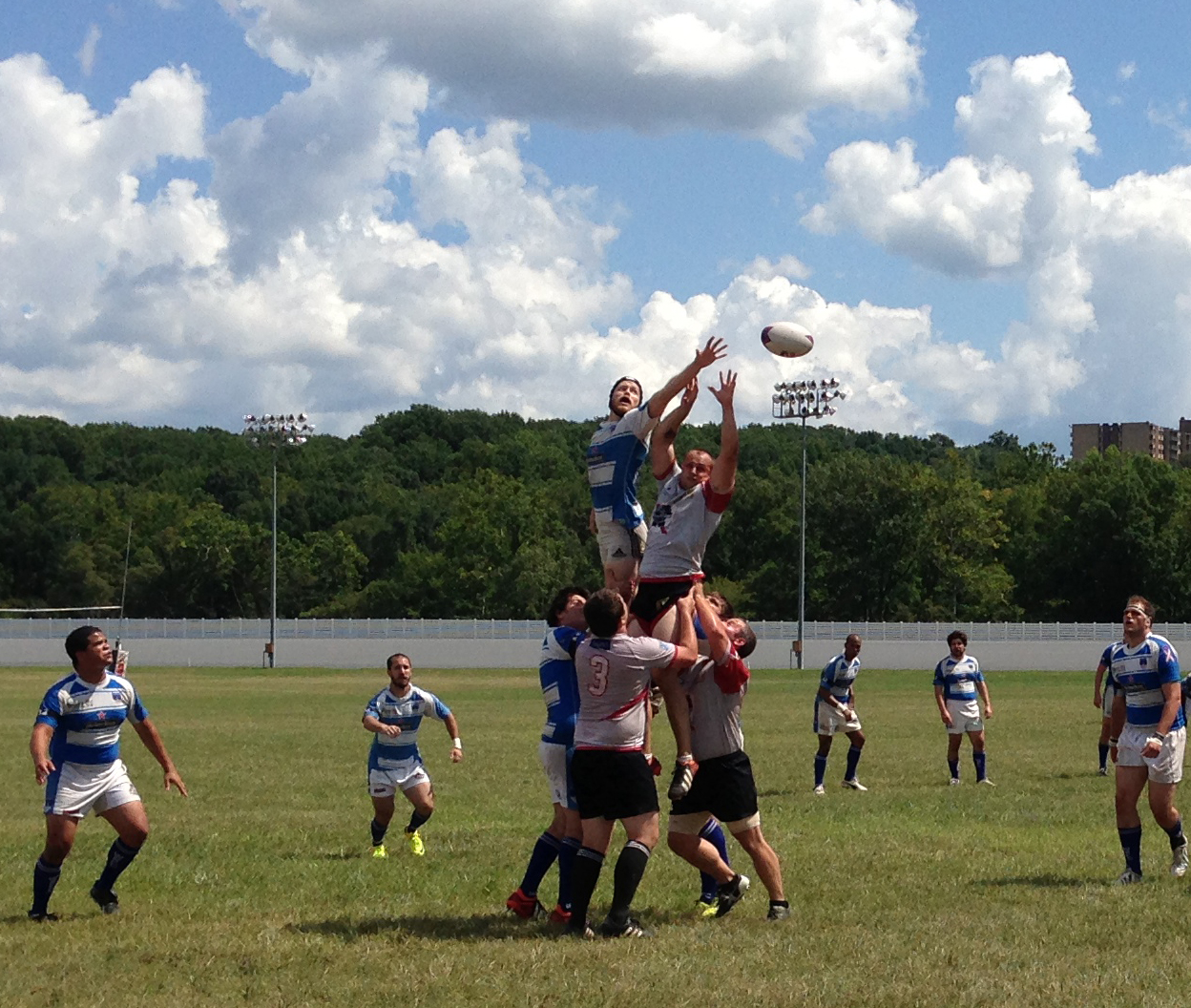In-Season Training Considerations for Wrestlers
https://www.youtube.com/watch?v=iss4jIw-3Y8
Cleaning Up Holiday Faves, Part 2
In the last post, we cleaned up cranberry sauce, stuffing, and shepherd's pie. Today on the menu is chili, roasted vegetables, and sweet potatoes (or candied yams that seem to appear at most feasts). Chili, an excellent cold-weather food; hearty, warm, and very easy to make. If you have a slow cooker, awesome, just dump the following ingredients into the cookers, set it on low for 6-8 hours and enjoy! If you don't, I'm sad for you (and you really should get one. Life is much simpler with a slow cooker), but never fear! This can also be done on the stove in a big stock pot. The only difference is to saute the onions and garlic a bit before adding everything else. Once all the ingredients are in the pot, simmer on med-low heat, stirring occasionally, for 30-45 minutes.
This recipe has pumpkin puree in it. I love using pumpkin as it adds extra "Umph!" to the chili by making it thicker. Pumpkin also has a decent amount of fiber, vitamins A and C, as well as a healthy dose of potassium. Make sure you use "pure" pumpkin puree, not the stuff for pies.
Also of note, this chili is absolutely loaded with vegetables (versus most chilis which are just meat and beans). The added bulk of the vegetables keep you full longer and you don't need to eat as much to reach satiety (thus saving a bit on calories).
Without further ado, I present, Pumpkin Chili!
- 1/2 onion, chopped
- 2-3 cloves of garlic, minced
- 2-3 cups of diced rutabaga or potatoes (we use rutabega a lot, especailly in the winter since it's in season)
- 1-2 cans of beans of choice (we like black and pinto)
- 2-3 carrots, diced
- 1 each of red and green bell peppers, diced
- 3/4 cup frozen corn (or canned, but I think canned tastes funny)
-1 can of pumpkin puree
- 1 28 oz can of diced tomatoes, drained
- 1-2lbs of meat of choice (ground beef or turkey. I use 2-3 chicken breasts and just shred it after it's done cooking)
- A generous sprinkling of the following spice: chili powder, paprika, cumin, salt, pepper, and a touch of cinnamon. You can add any "heat" spices you want, such as a jalapeño or two. My heat tolerance is -45, so chili powder is as hot as I can go.
Slow cooker- throw it in, cook for 6-8 hours on low.
Stock pot on stove-
1. sautee onions and garlic in a bit of oil for 3-5 minutes.
2. Toss in the meat and cook until brown on the outside.
3. Throw everything else in and simmer on med-low heat for 35-45 + minutes.
Moving on to roasted veggies. Winter is a perfect time to take advantage of the root vegetables that grow abundantly this time of year. It's fairly simple to make, choose the vegetable combination that appeals to you the most, throw all of it into a baking dish, and roast away. Roasting brings out the natural sweetness in most of the vegetables so they're pretty flavorful. Since the flavors of the vegetables are brought out, there's no need for lots of oils or calorie bomb sauces saving your waistline. This is a great, healthy side for any meal this season.
Salt and pepper are always a go-to when it comes to seasoning, but experimenting with thyme, rosemary, bay leaves, and balsamic vinegar is not out of line either. Garlic, carmalized onions (added either before or after the roasting) also add a flavor burst.
Roastable Vegetables:
- Parsnips: somewhat sweet, I think they taste like a "clean carrot," and are excellent complements to more bitter vegetables such as brussel sprouts.
- Brussel sprouts- you have to be careful not to over roast them as they will start to become bitter. Slice these little guys up and toss in with they're root compadres.
- Butternut squash- peel and dice up in smaller chunks. Butternut squash is pretty dense, so in order to have softer pieces (without blackening the rest of the vegetables to a crisp), ensure that the squash are in smaller pieces so they'll cook more evenly. Butternut is also a bit sweet.
- Potatoes- either white or sweet, both options are healthy and excellent addtions to any roasted vegetable combination.
- Rutabaga- similar to butternut squash, it's pretty dense so make sure it's in smaller pieces.
- Beets- also a sweeter, earthier taste (and it turns your pee pink!) These guys go very well with balsamic vinegar and goat cheese.
Dice up any combination that appeals to you, toss with desired spices (or vinegar), roast in the oven around 400-425 for 30-45 minutes (or whenever vegetables are tender). Serve and enjoy!
Candied yams, these were a staple of holiday meals when I was a kid, are well, not so great for you. The excessive amount of sugar negates the health benefits of yams (or sweet potatoes, depending on who makes them). Here's a way to still enjoy the delightful tuber without sending your body into sugar shock.
This is adapted from Tosca Reno (Clean Eating)
- 2 lbs of sweet potatoes, peeled and diced
- 2 medium parsnips, peeled and chunked
- 1/2 to 1 tbs of olive oil or butter
- 1/8- 1/4 teaspoon of nutmeg and cinnamon
- 1-2 Tbs of maple syrup or honey
- Salt as needed
1. Toss in potatoes and parsnips into stock pot, cover with water, and boil until soft.
2. Drain, and blend in a blender or mash by hand in a large bowl.
3. As potatoes and parsnips are mashed or blended, add in the nutmeg, cinnamon, and maple syrup/honey. Add the oil in as needed to make smooth (you may not need it).
4. Blend until smooth, taste testing as you go. Add, in small increments, salt and sweetener to achieve desired level of sweetness.
Come back next week, we'll tackle desserts!
Welcome to the new SAPTstrength.com
If you've been a long-time reader of the SAPT blog or a SAPT client, please take a few moments to browse around the new site! There are still some bugs to work out and content to put in place, but all-in-all we hope you find the new site more informative and easier to use to get - and stay - in touch with all of us at SAPT!
Nutrition Tips For Those LOOOOONG High School Tournament Weekends
Tournaments! Weekend-long (sometimes longer) events where athletes play multiple games in one day with very short breaks between games. Definitely not long enough to get a solid meal in before the beginning of the next match. All of our baseball and volleyball players have, seemingly, an endless stream of tournaments during the club seasons; it blows my mind a bit.
Anyway, this can pose a problem when it comes to being able to fuel properly before/after games. The aim for this post will be to provide tips how to eat leading up to the tournament, during the tournament (i.e. between games/matches), and sample snacks to bring. One can make this a complicated subject (eat 23.5 grams of protein, 15.8 grams of carbohydrates, eaten during the half-moon's light for optimum performance), but it's not really. It's easier than tracking orcs through the plains of Rohan.
If you glean nothing else out of the post, glean this: EAT. REAL. FOOD. There's no magic bullet supplement that will enhance your performance any more than eating solid, real food regularly.
Leading up to the tournament:
For (at least) the week prior, ensure that your meals consist of REAL foods, that is, plenty of vegetables and fruits, lean proteins, and healthy fats. Conveniently, the same rules that appeared in the post Eating for Strength and Performance, apply here. Craziness. As I've said before, if you fill your tank with crap, you're going to feel like crap, thus leading to performing like crap. Simple yes? We live in an age where technology makes our lives "easier" (though I would argue against a few of the more recent inventions) yet eating, the most basic human need, is over complicated. Our volleyball and baseball player (and all our athletes!) will take their training to the next level if if they just ate real food. Practical tips on how to achieve this below.
During the Tournament:
The length of the competitive day (6, 8, 10 hours?!!) will, to a degree, determine what types and how much food to bring. Obviously, longer tournament days will require more food than the shorter days. Here are three main points to remember when seeking foods for between games/matches.
1. EAT. REAL. FOOD. (notice a theme?) Don't go to 7-Eleven and pick up a Slurpee and whatever else they sell there. (You should NOT find body fuel at the same place you find car fuel.) Grab some fruit, make some sandwiches, and bring plenty of WATER. We'll go over a couple of beverages down below, but the number one liquid you should slurp: good ol' water. Divide your bodyweight in half... that's how many ounces (MINIMUM!) you should be drinking. If it's hot, and sweat is soaking your garments, drink your body weight in ounces.
2. Choose food that you know will sit well in your stomach. If you never eat peanut butter and pickle sandwiches (though if you don't, I don't know what's wrong with you. Try it. But not on tournament day.), don't pack them. The combination of nerves and high activity doesn't provide the best situation to try new foods. Pack food that you know you can handle (I also recommend staying away from a lot of dairy and highly acidic foods/drinks as both can lead to upset stomachs during intense activity).
3. Pack a cooler. I know it's extra work, but you'll be glad you did when you're able to chow down on healthy, delicious and filling foods while your friends are relegated to protein bars, candy, and who knows what other food they scrounge up.
Practical Solutions:
What does all this look like? Fill in your preferred food choice utilizing this general template. Think of it as a nutritional MadLib.
Breakfast:
1-2 fist-sized Protein source (eggs, cottage cheese, lean meat, Greek yogurt) + 1/2- 1 cup of Complex Carbohydrate source (fruit, oatmeal, whole grain toast, sweet potato, beans, any kind of vegetable) + 1-3 Tablespoons healthy fat (nut butter, real butter, olive oil, egg yolks, 1/2 avocado, nuts, pumpkin seeds) + at least 1-2 fist-sized serving of vegetables!
As an aside, I made cauliflower cream of "wheat" (and you know I love my cauliflower) the other day for breakfast. I tried this recipe and I just found this one. I think the second one would be a tastier option; the recipe I tried still had a cauliflower-y aftertaste. Maybe I needed riper banana or something. Anyway, this is an example a creative way to incorporate vegetables in tastier ways. And make them a DAILY part of your diet.
Lunch:
1-2 fist-sized protein source + 1/2 cup/serving of carbohydrate* + 1-3 Tablespoons healthy fat + at least 1-2 fist-sized serving of vegetables!
Dinner:
You guessed it: 1-2 fist-sized protein source + 1/2 cup/serving of carbohydrate* + 1-3 Tablespoons healthy fat + (you guessed it) at least 1-2 fist-sized serving of vegetables!
Snacks:
The same composition as the meals, just take half the serving side. For example, a hard boiled egg and an apple would be perfect. If you want some ideas of various foods to try, check out my posts here and here for other, less publicized super foods that have a plethora of benefits to offer to the competitive athlete.
* the amount of carbohydrates will fluctuate depending on if you work out/practice that day or not (see linked post about performance nutrition for more information). Eat 1-2 extra cups of carbohydrates spread throughout the day if practice/workouts are on that day. The "carb-loading" tactic is not a good idea unless you're running an Iron Man. A huge pasta meal the day before a competition doesn't do much for you except make you feel really full and sick.
Here are some sample snack options that might do well during long tournament days:
- Fruits (always a great option) such as bananas, apples, oranges, kiwis, melon etc.
- Homemade granola (complex carbohydrate source)
- Trail mix- a healthy blend of nuts and seeds (to provide satiety) and dried fruit with maybe a little chocolate thrown in (because let's be honest, the M&Ms are the best part).
- Celery, carrots, sliced bell peppers, jicima slices (or any raw veggie) and hummus
- Hardboiled eggs (this is where the cooler becomes handy), deli meat, tuna fish, sardines (if you're ok with no one sitting near you while you eat)
- Sandwiches: meat/cheese or peanut butter variations
Beverages-
1. Water, water, and more water. Water is the oil that keeps the body's engine running smoothly. No water? The engine starts grinding and struggling, like Gimli over long distances, and eventually poops out entirely. Not a desirable result during a big showcase tournament.
2. Drinks like Gatorade and Powerade are ok, but don't make them the primary source of liquid. They're useful if there's copious amounts of sweating going on (to help replace electrolytes) but too often I see athletes downing multiple bottles, when really, 1 bottle should be plenty.
3. If there's a decent chunk of time between games/matches, chocolate milk is actually a pretty good option for providing carbohydrates and protein (both of which are needed after a workout). I don't recommend drinking if there's only 15-20 minutes between games as dairy can sometimes upset stomachs.
4. Soda = fail.
Do you see a pattern? By eating quality food throughout the week and during the tournament days ensures that your body has the proper fuel for competition. Matter of fact, eating this way ALL the time does wonders for your health and performance.
Think of it this way: leading up to the tournament, athletes practice and strength train to prepare their bodies to ensure they're ready to compete. Any coach would tell you that if you try to cram all those hours of practice in the day before the tournament, things won't work out so well. The exact same principle applies to nutrition. If eating nutritious food starts the night before, well, things won't work out so well. Be vigilant in your preparations and take care as to what goes in your body as diligently and enthusiastically as you practice for each tournament.
Updates: Rugby, Tysons, New Coach, Vegas
This post is really off the topic I'm supposed to be covering today, but I've got too many important (and awesome) updates!

1. On Saturday I went out to watch the Washington Rugby Football Club at a pre-season warm-up tournament. It was an amazing day and the WRFC did quite well during the matches I saw.
SAPT will be working with the club in the coming months to refine as much of their strength and conditioning related needs as possible. There's no question, these guys train! The majority of the guys are what I'd describe as "BIG DUDES" but - as is a common misconception - just because you're a big dude, doesn't mean you can't learn better techniques, best practices, and generally step your game up to improve your training and become an even bigger, more deadly dude!
We'll start by working with the team on implementing a rotation of warm-ups. I like using warm-up rotations as it keeps the monotony down and allows us to match warm-ups with the practice to come. Why look like a bozo doing some high-intensity, "ready to crush anything" warm-up if the team has a very low-key recovery day at practice? We'll also be refining their pre-game routine and cool-downs.
2. Our new Tysons location is almost ready! Construction is going on right now to fix the floors and install showers. Our first day is set for Monday, September 16th!

Thank you to Custom Kinetics for helping making this possible!
3. Please welcome Jarrett Brummett as SAPT's newest coach! You may have already met Jarrett during his internship with us last summer. He was one of the interns that really stood out and we new was the most logical choice when we learned Tadashi would be leaving to head into a pre-med program.
4. Ryan and I are in Las Vegas right now (still) celebrating our 10-year wedding anniversary.






Have you voted yet today????
Rotary Stability for the Overhead Athlete and Cyber Revolutionist
Ever have trouble standing on one leg for a given time? How aboutbalancing a book on your head as you walk? Crawling under wire in an obstacle course without having your hip bump up and graze the wire? If so, you could be suffering from the condition many health professionals have deemed: Poopy Rotary Stability.
If you are an overhead athlete, this could be HUGE. Many of the things listed above may sound like they have nothing to do with serving or throwing a ball, but in essence they’re all accomplished with having a…. dare I say it…. Functional Core.
Yes, that’s right, I just dropped the F-word. Having Rotary Stability is all about having a core that functions correctly. Now usually I stray away from using the f-word because many functional zealots have lost the true meaning of functionality, probably somewhere in their pile of bosu balls and vipers, and I don’t want to be mixed in with them. But, if you look into the true meaning of functional movement as defined by Gray Cook and several other great coaches, you will see that there is something to this stuff. Functional is the absence of dysfunction. Dysfunction is when things aren't working the way they were designed to. So if your core has poor rotary stability (when it's deigned to have great stability), then it's reasonable to say it's dysfunctional.
So today’s post is going to be about the seemingly undefinable, “core” and its rotary stability component. I’ll walk you through what it is, what it does, and how to be less poopy. As an added bonus, I watched, "The Matrix" the other night and have been inspired to make it today's theme. So swallow the red pill and lets see how far the rabbit hole goes.
Rotary Stability is essentially the torso’s ability to resist rotation. Not all resistance is the same, however. When we use our core musculature, it is usually put into two categories: The Hard Core and the Soft Core.
The Hard Core is what is used in a maximal brace. The Hard core helps you when you pull a maximal deadlift, it overrides your breathing pattern and gives max effort to keeping your spine in place. This can be used in place of rotary stability at times, but if this is all you have to rely on, then there is no way you would be able to dodge Agent Smith’s bullets. When we use our hard core, we stop breathing, our blood pressure spikes, and we even temporarily lose range of motion in the torso. You can’t have very efficient movement using just your Hard Core, especially if it's repetitive.
The Soft Core is what is used at all other times. It consists of your deep core muscles that act as pelvic and spinal stabilizers. These muscles should work AUTOMATICALLY. In sports, the soft core is what is predominantly used in athletic movement. If these are poopy, then just imagine what is going on in that throw, serve, or punch.
Rotary Stability is a characteristic of your soft core. It helps to give your limbs a base of movement and transmit forces through your body. If you do not have sufficient Rotary Stability, then you are essentially shooting a cannon from a canoe. If you were to try to, the canoe would wobble and a lot of the force would be lost, the canoe may even topple. Whereas if you shoot it from an aircraft carrier, that cannon ball is going to fly. In the case of the overhead athlete, the force production of the hips and/or torso needs to travel through the core to be transmitted to the arm and eventually to the ball. So having their core be as stable as an aircraft carrier will ensure max power transference.
So the importance is obvious, but how do you commandeer that aircraft carrier? Well I have laid out a path for you to follow that even the oracle would approve of.
1. Make sure your mobility is in check. As I said in my mobility post, poor hip or thoracic spine mobility can really limit your core stability. Many of us lose mobility from sitting in our desks/pods and it goes hand in hand with losing our stability. So we need to remedy this first!
2. Work on Rotary Stability by itself. You need to start small and make sure you are not putting fitness on top of dysfunction. There are many exercises that do this: bird-dog, static anti-rotations, or even rotary planks.
3. Make it a dynamic stabilizer. Once you've established that base from step 2, you can start doing more advanced exercises. These exercises should put some sort of asymmetrical force on the body to make the soft core to turn on. Some that I like are: bent-over single-arm rows, single-leg RDL, single-arm rack carry, single-arm overhead press, single-arm rack squat.
4. Take down the Matrix. With Rotary Stability uploaded into your movement arsenal, you should now be ready to join Neo. You will be stronger, more injury-resistant and better at doing slow motion, three-dimensional stunts!





